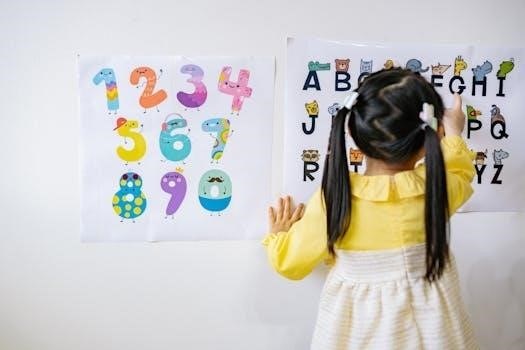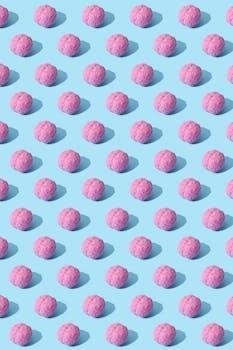The exploration of art through the lens of neuroscience reveals profound insights into human cognition. This interdisciplinary field examines how our brains perceive, process, and react to artistic stimuli.
The Growing Field of Neuroaesthetics
Neuroaesthetics, an emerging discipline, investigates the neural mechanisms underlying aesthetic experiences. It explores how our brains respond to beauty, art, and other sensory stimuli that evoke emotional and cognitive reactions. This field employs various techniques, including brain imaging and physiological measures, to understand the complex interplay between art and the brain. Neuroaesthetics aims to bridge the gap between the subjective experience of art and the objective study of neuroscience, offering new perspectives on creativity, perception, and the very nature of artistic appreciation. It also examines how cultural and individual differences influence aesthetic preferences.

The Brain’s Response to Art
Art engages multiple brain regions, triggering emotional, cognitive, and sensory responses. The specific neural pathways activated depend on the artistic medium and individual perception.
Neural Pathways Activated by Artistic Experiences
When experiencing art, various neural pathways become active, reflecting the complexity of the process. Visual art engages the visual cortex, processing shapes, colors, and forms. Auditory art stimulates the auditory cortex, analyzing rhythm and melody. Emotional responses to art involve the amygdala and limbic system, leading to feelings of pleasure or displeasure. Furthermore, cognitive engagement activates the prefrontal cortex, promoting interpretation and reflection. The interaction of these pathways results in a rich and multifaceted experience, highlighting the brain’s sophisticated response to artistic stimuli. The specific pathways activated can vary based on the individual’s background and preferences.
Theories Linking Art to Specific Brain Regions
Several theories propose links between art appreciation and specific brain regions. One theory suggests that the reward system, including the nucleus accumbens, is activated during pleasurable artistic experiences. Another theory emphasizes the role of the visual cortex in processing visual art. The fusiform face area may also be activated in response to portraiture. Furthermore, the parietal lobe is thought to be involved in spatial processing and understanding composition. These theories aim to map specific artistic responses to localized brain activity, offering insights into the neural underpinnings of aesthetic engagement. However, these theories are still evolving.

Art as a Tool for Understanding the Brain
Art provides a unique lens for understanding the complexities of the brain. By studying artistic creations, we gain insights into neural pathways and cognitive functions.
Artistic Representations of Brain Structures and Functions
Artists, inspired by neuroscience, create works that visually interpret the brain’s intricate structures. From detailed neuron illustrations to abstract representations of neural networks, these artworks bridge the gap between science and art. Such representations can offer new perspectives on brain anatomy and the complex functions they perform, making the intangible more accessible. Through artistic renderings, the scientific community can explore various angles of the brain’s functioning and the public can get a unique understanding of its inner workings. These visual interpretations often spark curiosity and promote a deeper appreciation of brain science.
Neuroscience-Inspired Art and its Impact
Neuroscience has fueled a new wave of artistic exploration, inspiring artists to create works that reflect the brain’s processes. These pieces often use scientific data, such as MRI scans and neural pathways, as the basis for their artistic expression. The impact of this approach is multifaceted, educating the public about brain function while also pushing the boundaries of what art can represent. By visualizing complex scientific concepts, these artworks make neuroscience more relatable and engaging, fostering public interest and understanding. This intersection also challenges traditional artistic forms, leading to innovative techniques and mediums.

Artistic Exploration by Neurological Patients
Neurological conditions can alter artistic expression, revealing how brain damage, disease, or savant autism can uniquely influence creative outputs. Such artworks provide insight into neural function.
Artistic Expression in the Context of Brain Damage and Disease
Art created by individuals with brain damage or neurodegenerative diseases offers a unique window into how specific neural pathways influence creative output. These artistic expressions, whether from localized or diffuse damage, reveal the brain’s capacity to adapt. Such works demonstrate that even with neurological challenges, the imagination and artistic depiction remain possible, providing valuable insights into the brain’s resilient nature. The resulting art can showcase altered styles, new themes, or unique perspectives, highlighting how various brain regions contribute to artistic processes and how disruptions impact creative abilities.
Savant Autism and Artistic Abilities
Savant autism presents a fascinating case study in the intersection of neuroscience and art. Individuals with savant syndrome often exhibit remarkable artistic skills, sometimes alongside cognitive challenges in other areas. These talents, which can manifest in various forms such as hyperrealistic drawing, complex musical abilities, or intricate sculptures, suggest unique neural wiring and information processing pathways in the brain. The study of savant artistic abilities provides valuable insights into how specific brain structures and functions contribute to exceptional creative expression. Understanding these unique capabilities can help reveal the complex relationship between the brain and art.
The Role of Neuroscience in Artistic Creation
Neuroscience provides a framework for understanding the cognitive mechanisms behind artistic creativity. It explores the neural processes involved in innovation and the generation of novel ideas.
Neuroscience Insights into Creativity and Innovation
Neuroscience is increasingly illuminating the brain mechanisms that underpin creativity and innovation in art. Studies reveal that creative processes activate multiple brain regions, not just those associated with logic or language. The prefrontal cortex, crucial for planning and decision-making, is involved, as are areas related to emotion and memory. Furthermore, the default mode network, often associated with mind-wandering, plays a role in generating novel ideas. Neuroscientific research explores how these neural networks interact, providing insights into the origins of artistic inspiration and the unique abilities of the creative mind; This deeper understanding can help artists enhance their own creative processes.
How Neuroscientific Studies Inform Art Practices
Neuroscientific studies are increasingly informing art practices by providing a deeper understanding of perception and emotional responses. Artists are using insights into color theory, visual processing, and cognitive biases to create works that are more engaging and impactful. For example, understanding how the brain processes visual information helps artists manipulate depth and perspective for better realism or abstraction. Similarly, knowledge about emotional processing can be leveraged to evoke specific feelings through artistic mediums. Furthermore, research into how attention is captured and maintained is crucial for crafting artworks that effectively engage viewers, leading to more meaningful experiences. Ultimately, neuroscientific findings provide artists with a new set of tools and knowledge to enhance their creative expressions.
Contemporary Artists Working with Neuroscience
Several contemporary artists explore brain themes, creating works inspired by neural structures and functions. These artists often blend scientific accuracy with artistic interpretation, yielding unique pieces.
Notable Artists Exploring Brain Themes
Greg Dunn, a neuroscientist and artist, creates intricate pieces inspired by brain structures, employing techniques like microetching to visualize neural networks. Todd Siler, a multi-media artist, emphasizes the brain as the core of art and human experience. Many artists collaborate with scientists, using techniques like fMRI data to inform their creations, blending scientific insights with artistic vision. These artists often aim to translate the complexities of the brain into visually compelling art, thus bridging the gap between science and artistic expression. Their work offers a unique perspective on how we understand both the brain and art.
Examples of Neuroscience-Related Artworks
The “Art of the Brain” exhibition features photographs, illustrations, and sculptures celebrating the beauty of the brain. Greg Dunn’s microetchings showcase intricate neural networks, blending science and art. “Self Reflected,” a complex artistic rendering of the brain, won international acclaim, demonstrating the intersection of art and neuroscience. Some artists use MRI patterns in quilts, merging domestic craft with scientific data. Other works include paintings, scrolls, and digital installations inspired by brain structures and function, illustrating the diverse ways artists explore neuroscience through various mediums, reflecting the brain’s complexity and beauty.

The Future of Art and Neuroscience Collaboration
Emerging technologies will drive new artistic applications, pushing interdisciplinary research. This collaboration will enhance our understanding of creativity and perception through art and neuroscience.
Emerging Technologies and Artistic Applications
The integration of brain-computer interfaces (BCIs) presents novel avenues for artistic creation, enabling artists to translate brain activity directly into art. Furthermore, advanced neuroimaging techniques, such as fMRI and EEG, are providing artists with new visual aids and data for their work. These technologies also allow for a deeper exploration of audience perception and emotional responses to art. The use of mobile brain-body imaging further enhances the possibilities, allowing artists to create immersive and interactive installations. This opens up a new era of artistic expression that is informed by real-time brain data, pushing the boundaries of traditional art forms.
Interdisciplinary Approaches in Art and Neuroscience Research
Collaborations between artists, neuroscientists, and psychologists are fostering a deeper understanding of the complex relationship between art and the brain. These partnerships combine artistic intuition with rigorous scientific methods, leading to innovative research designs. The fusion of art and science allows for the exploration of creativity, perception, and emotion through diverse perspectives. Furthermore, this interdisciplinary approach facilitates the development of new tools and techniques for both artistic creation and neuroscience research. By bringing together different fields, we gain a more comprehensive picture of how art impacts the human experience, and how the brain shapes our artistic expression.
